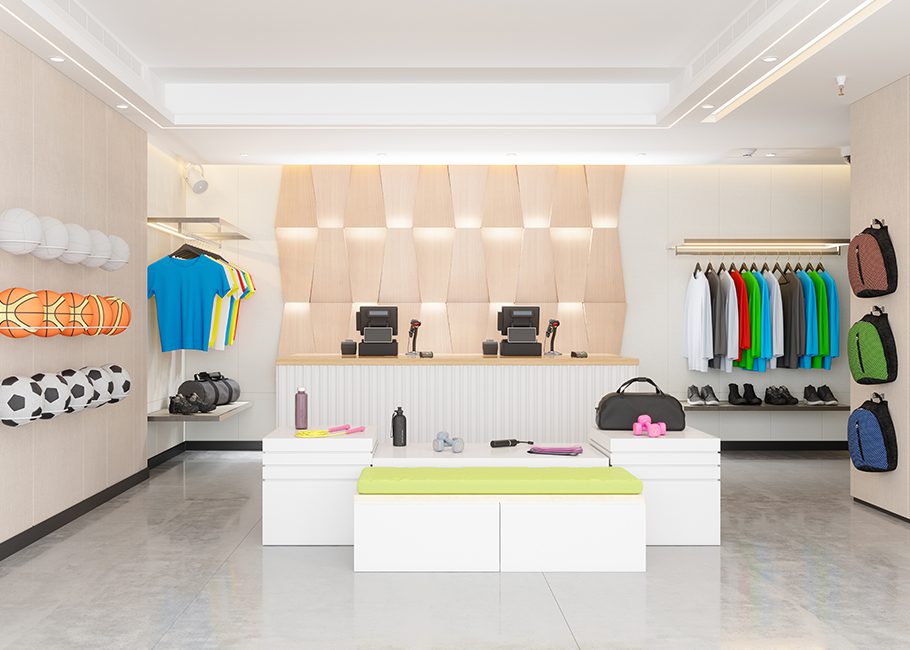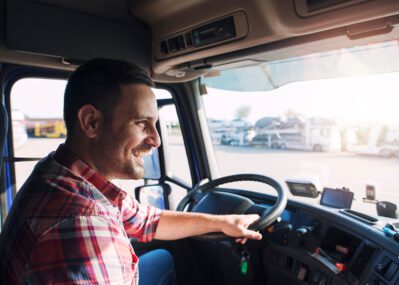
Stay-at-home shoppers didn’t know it at the time, but during the most intense months of the worldwide pandemic shutdown, retail shopping behaviors changed in ways that will impact the retail experience forever.
As a tumultuous 2020 was rocked by COVID-19, U.S. retail wasn’t left unchanged. What started as “pandemic shopping” out of necessity is driving the strongest retail trends:
- Delivering faster than the competition
- Connecting online and in-store shopping experiences
- Sharing more relatable brand stories
- Creating more satisfying in-store experiences
1. The All-Important Last Mile
The shift to online shopping, particularly for necessities, has put enormous pressure on what’s called “last-mile delivery.”
Last-mile delivery is the final, most expensive and challenging step in delivery to the intended destination, most often the consumer’s front door. It is affected by traffic, weather and the need to move many single-package deliveries quickly.
Changes in shopping behavior and consumer expectations have put even more focus on last-mile delivery. Fast shipping is the new gold standard of consumer satisfaction. Several emerging trends in last-mile delivery include:
- Same-day delivery — Retailers that can deliver the same day stand the best chance of securing a return customer. Consumers, particularly millennials, are willing to pay a premium for faster shipping.
- Insourcing the last mile — According to a study from Square and Wakefield Research, independent small-to-medium-sized local shops can take advantage of delivering direct to their customers. Many are utilizing their own fleet to better control delivery, or they are joining with other retailers to save costs associated with outsourcing delivery.
- Urban warehouses — Creating delivery hubs closer to consumers reduces delivery time, miles traveled and overall costs. It also increases the pool of resources needed to get products to consumers fast.
- Smart technology — Online inventory systems and technology have improved significantly. They allow consumers to keep updated in real time as to where their packages are in the delivery process. The next wave of tech may be inside the package, monitoring the temperature and condition of perishable items or helping plan the safest delivery route to avoid weather occurrences that could delay shipping.
- Upselling opportunities — Delivery could be the new point of sale. Technology enables delivery vehicles to carry targeted products that are frequently ordered, allowing customers to purchase additional items when the driver arrives at the customer’s doorstep.
With 75% of shoppers now preferring delivery over pickup, and additional revenue opportunities connected to exceptional delivery service, retailers are investing in improving last-mile delivery.
2. Blurring Online and Offline Shopping Experiences
Though the omni-channel revolution that connects at-home and in-store shopping experiences had already begun, Retail Dive says the pandemic accelerated what would have been several years of e-commerce growth into a few months.
“During the pandemic, people were spending an increasing amount of time on their phones and other devices,” said Carmine Bucalo, Director of Creative Services at Packaging Corporation of America. “As a result, e-commerce shopping exploded.”
Businesses that underutilized their websites quickly learned that “nice to haves” were now critical to staying open. Many smaller businesses that never had an online store suddenly had to adjust quickly or risk closing for good. Other technology, including QR codes, has come back into fashion since the pandemic, allowing shoppers to move seamlessly from offline to online experiences.
Shoppers are increasingly supportive of local businesses, but online opportunities like virtual shops that are accessible on social media platforms can help small businesses compete with the largest online retailers. This creates an opportunity for businesses to create a consistent brand story with both in-store and e-commerce packaging.
3. Brand Storytelling Becomes Personal
If we learned one thing in 2020, it’s that few things are more important than connecting as humans. However, random content about your brand that is scattered throughout digital channels won’t go far. In order to build loyalty, brands need to tell a consistent story across all channels.
According to recent retail studies, 76% of U.S. consumers shop online, and it is predicted that e-commerce sales could nearly double by 2024. With greater selections and options online, brick-and-mortar retailers must create a shopping experience that invites customers back to see, feel and experience a brand.
Consumers are now connected digitally for more than 12 hours a day. That said, brick-and-mortar will continue to be important, and brands need to seamlessly connect online and offline experiences through consistent storytelling.
4. Creating a Fresh In-Store Design Experience
Although consumers have fully embraced online shopping, Retail Customer Experience reported that nearly half of post-2020 shoppers surveyed prefer in-person retail experiences. And if a retailer gives them a positive experience or even a memory to walk away with, the likelihood of those shoppers returning increases to 90 percent.
Stats like those are driving brick-and-mortar retailers to rethink shopping experiences. What should we expect?
- Design for demographics — Retailers are designing store environments to encourage shoppers to post their experiences on social media and promote the retailers’ products. This includes displays or entire walls that create a backdrop for selfies.
- Minimalistic merchandising — Shelves are no longer packed with inventory, and broad selection isn’t the draw for in-person shopping. With online shopping offering every option and variety delivered to your doorstep, in-store retailers can differentiate the shopping experience with awe-inspiring, experiential displays.
- Comfortable and inviting store design — Post-2020 retail environments are incorporating the safe-at-home feeling. Retail experiences are mimicking home interior design trends.
- Natural lighting — Likewise, natural lighting feels more like home. According to RetailBiz, natural light is a mood booster and also gives consumers a more precise sense of colors.
- Wayfinding leads the way — Wayfinding describes how retailers guide shoppers through the store with signage and simple layouts. The goal is to make it easy for shoppers to navigate the in-person shopping experience on their own. When combined with pleasing visuals and signage, wayfinding enhances the overall shopping experience.
As consumers increasingly return to the retail environment, retailers can make a lasting impression by creating a more emotional and memorable in-store shopping experience for customers.
In-Person Retail Changed Forever
The COVID-19 pandemic wreaked havoc with supply chains and accelerated the adoption of online shopping. As consumer behaviors shifted, retailers that are improving the in-store experience will be positioned to increase sales.
PCA creates high-graphic packaging and merchandising solutions for consumer goods manufacturers and retailers of all sizes and distribution channels. To help meet today’s shopper expectations, we have corrugated solutions to get products to customers, no matter when, where or how they prefer to shop. Get retail-ready for all seasons with our in-store displays and packaging.
Like what you read? Then be the first to know when a new article is published by entering your email below!


